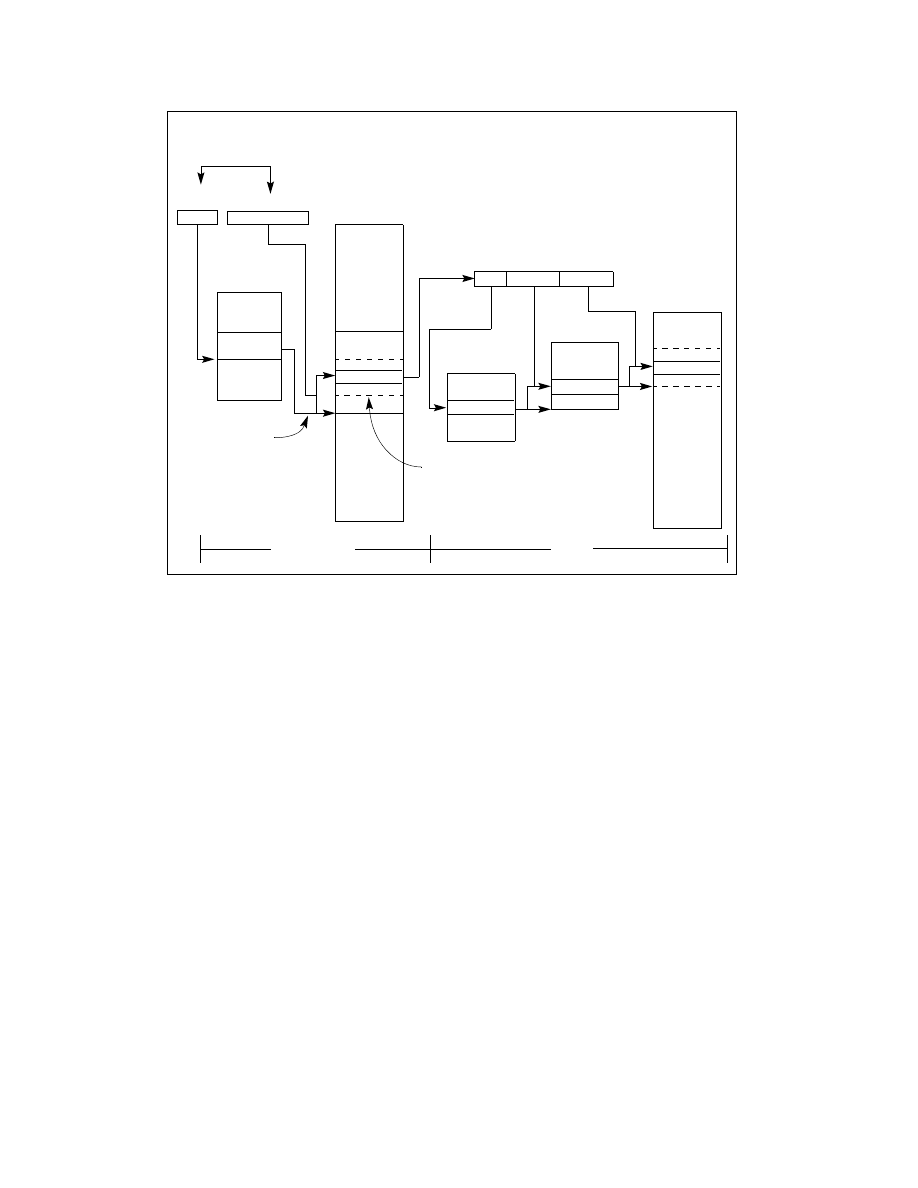
3-2 Vol. 3A
PROTECTED-MODE MEMORY MANAGEMENT
If paging is not used, the linear address space of the processor is mapped directly into the physical address space
of processor. The physical address space is defined as the range of addresses that the processor can generate on
its address bus.
Because multitasking computing systems commonly define a linear address space much larger than it is economi-
cally feasible to contain all at once in physical memory, some method of “virtualizing” the linear address space is
needed. This virtualization of the linear address space is handled through the processor’s paging mechanism.
Paging supports a “virtual memory” environment where a large linear address space is simulated with a small
amount of physical memory (RAM and ROM) and some disk storage. When using paging, each segment is divided
into pages (typically 4 KBytes each in size), which are stored either in physical memory or on the disk. The oper-
ating system or executive maintains a page directory and a set of page tables to keep track of the pages. When a
program (or task) attempts to access an address location in the linear address space, the processor uses the page
directory and page tables to translate the linear address into a physical address and then performs the requested
operation (read or write) on the memory location.
If the page being accessed is not currently in physical memory, the processor interrupts execution of the program
(by generating a page-fault exception). The operating system or executive then reads the page into physical
memory from the disk and continues executing the program.
When paging is implemented properly in the operating-system or executive, the swapping of pages between phys-
ical memory and the disk is transparent to the correct execution of a program. Even programs written for 16-bit IA-
32 processors can be paged (transparently) when they are run in virtual-8086 mode.
3.2 USING
SEGMENTS
The segmentation mechanism supported by the IA-32 architecture can be used to implement a wide variety of
system designs. These designs range from flat models that make only minimal use of segmentation to protect
Figure 3-1. Segmentation and Paging
Global Descriptor
Table (GDT)
Linear Address
Space
Segment
Segment
Descriptor
Offset
Logical Address
Segment
Base Address
Page
Phy. Addr.
Lin. Addr.
Segment
Selector
Dir
Table
Offset
Linear Address
Page Table
Page Directory
Entry
Physical
Space
Entry
(or Far Pointer)
Paging
Segmentation
Address
Page